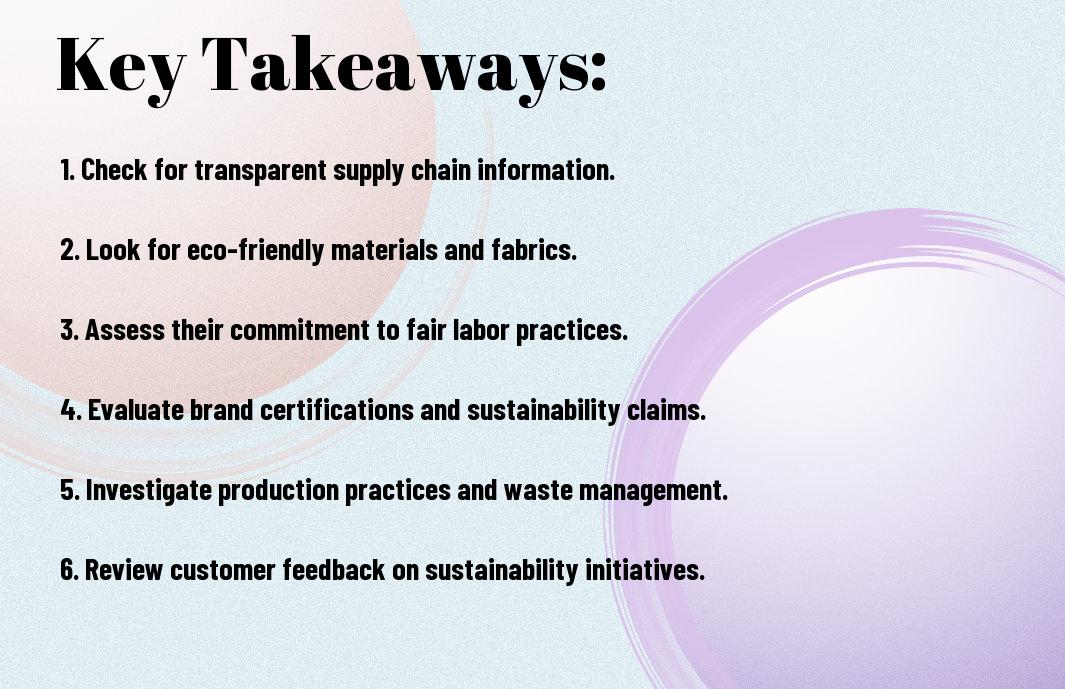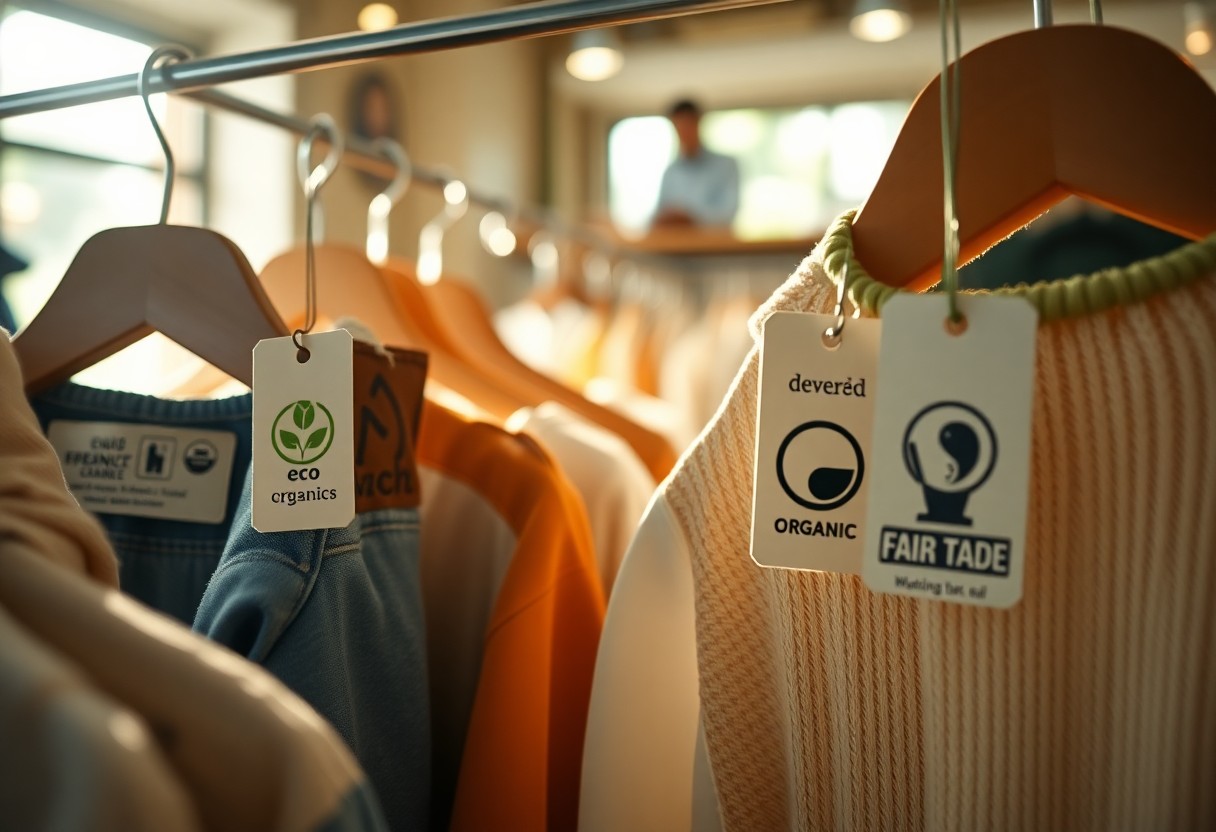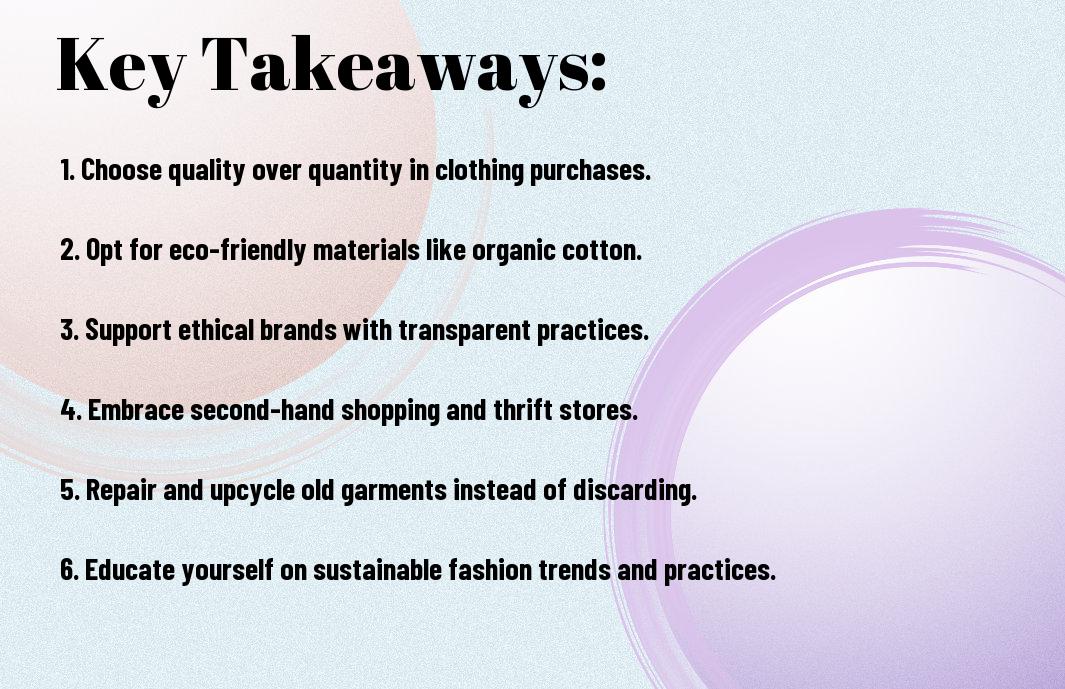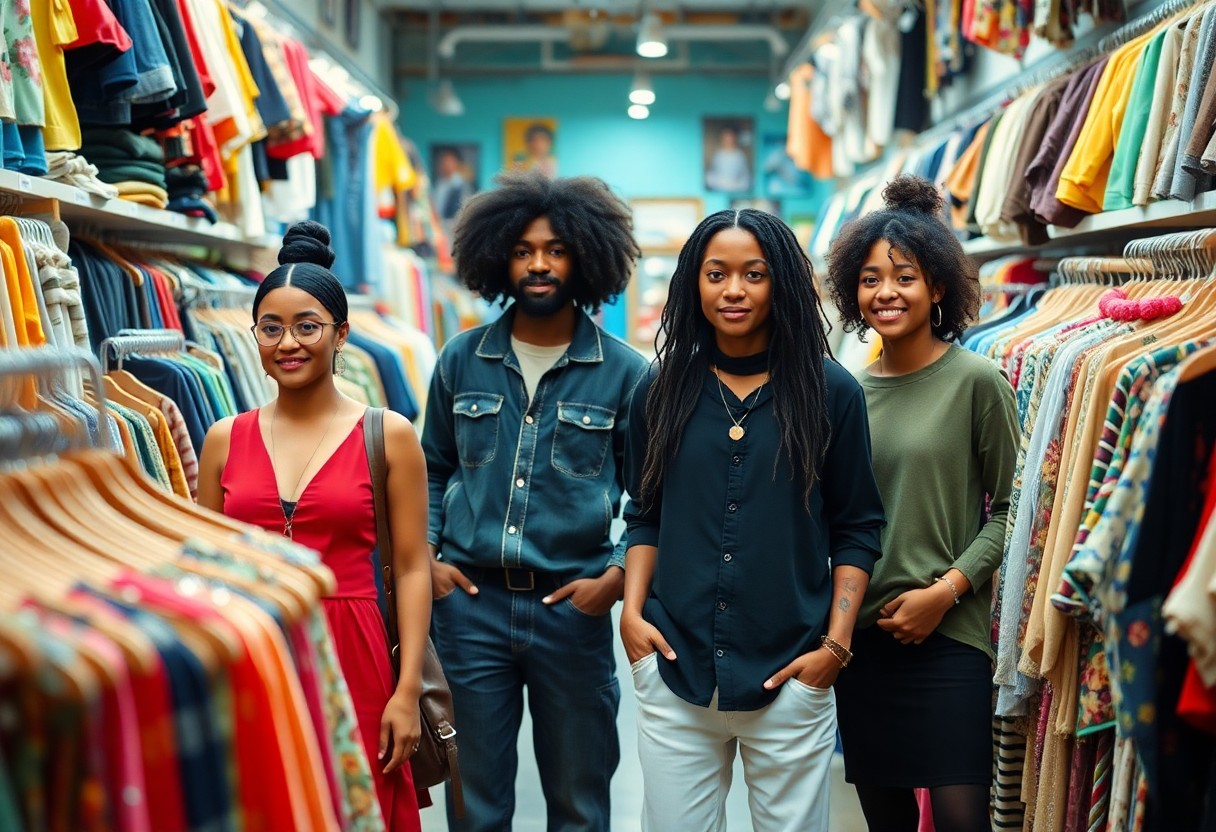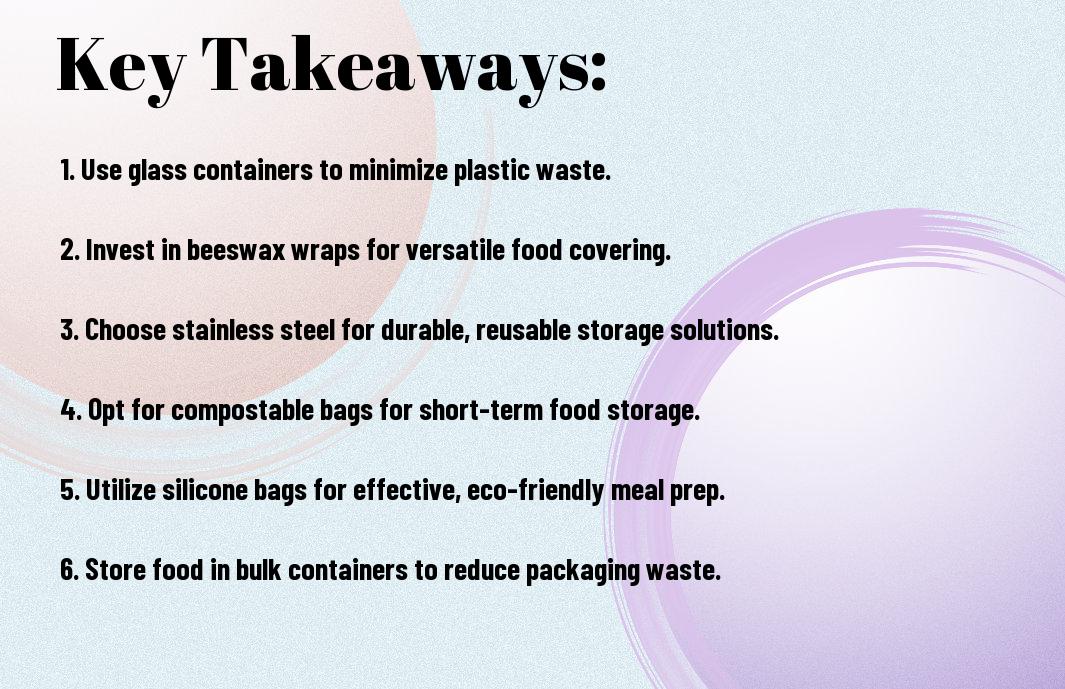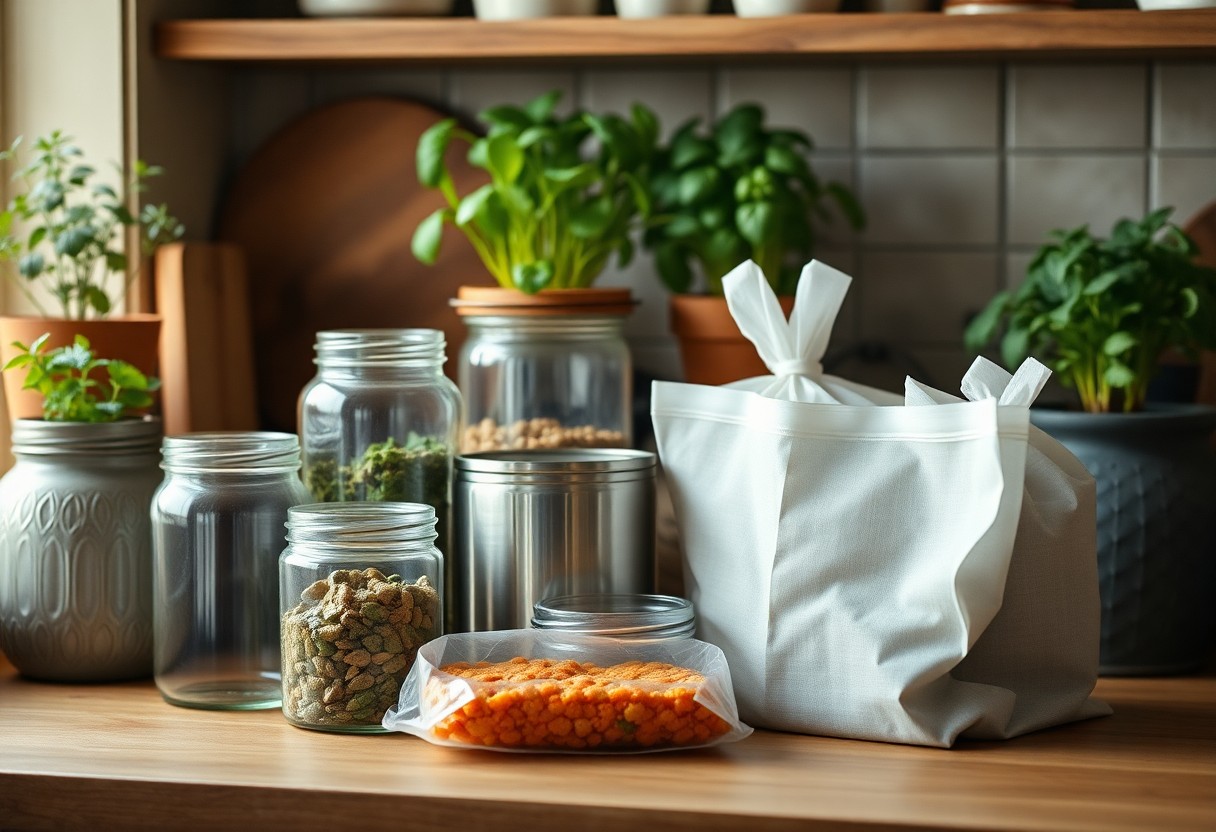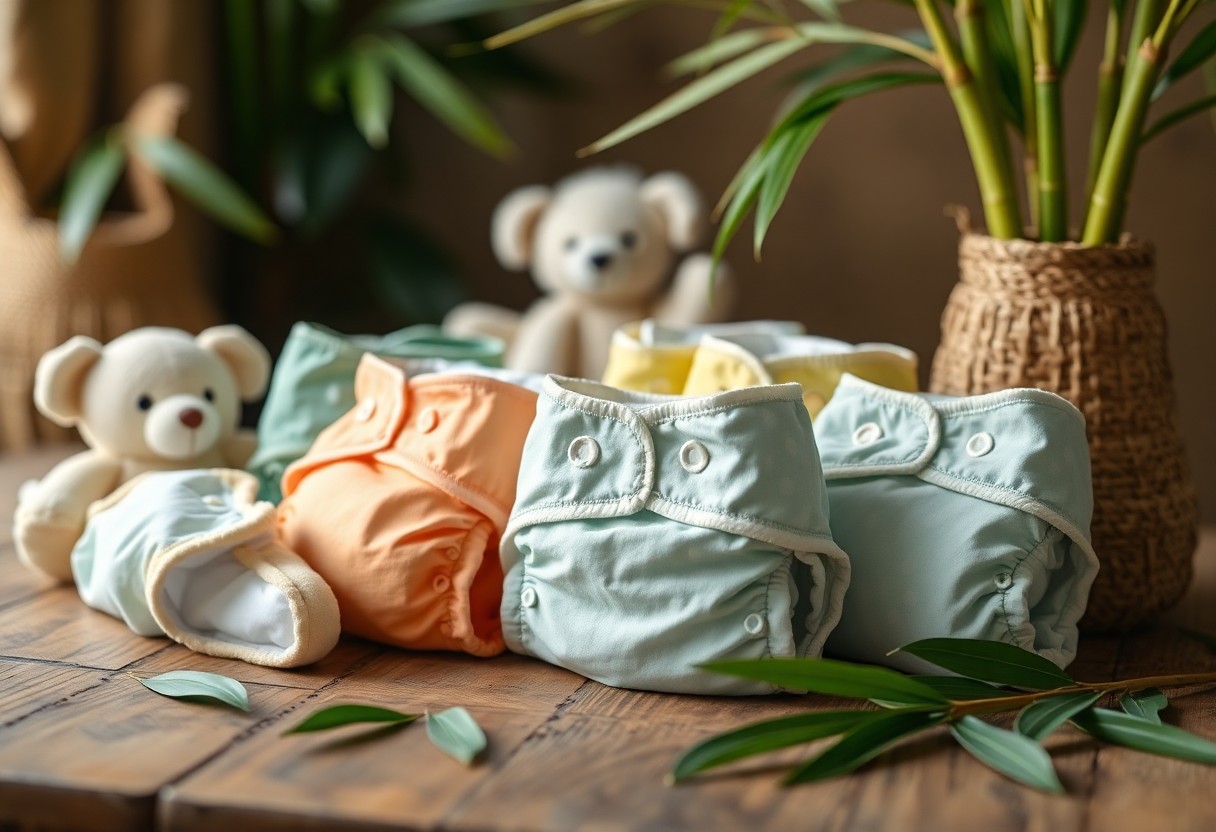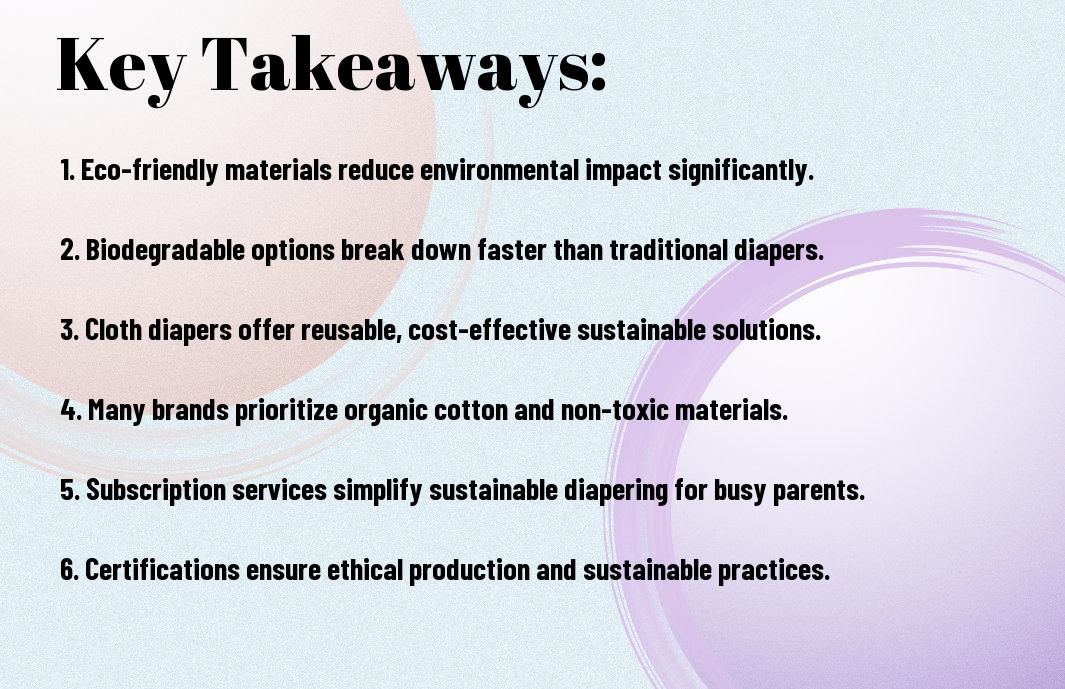As you initiate on the noble pursuit of refining your personal style, you likely find yourself pondering the virtues of a sustainable wardrobe. Your desire to adorn yourself in attire that is as gentle on the planet as it is pleasing to the eye is truly commendable. In this guide, you will discover the art of curating a wardrobe that not only reflects your impeccable taste, but also aligns with your values of reducing waste and living in harmony with the environment, allowing you to dress with elegance and integrity.
Key Takeaways:
To build a sustainable wardrobe, consider the following points:
- Invest in high-quality clothing made from durable materials that can withstand the test of time, reducing the need for frequent purchases and waste.
- Adopt a minimalist approach by paring down your wardrobe to only the items that bring you joy or serve a purpose, making it easier to maintain and care for your clothing.
- Focus on timeless pieces that won’t go out of style quickly, such as classic designs and neutral colors, to minimize the environmental impact of fast fashion.
- Explore second-hand shopping options, like thrift stores or online marketplaces, to give new life to existing garments and reduce the demand for new, resource-intensive clothing.
- Practice mindful consumption by considering the environmental and social implications of your purchasing decisions, and choose brands that prioritize sustainability and transparency in their production processes.
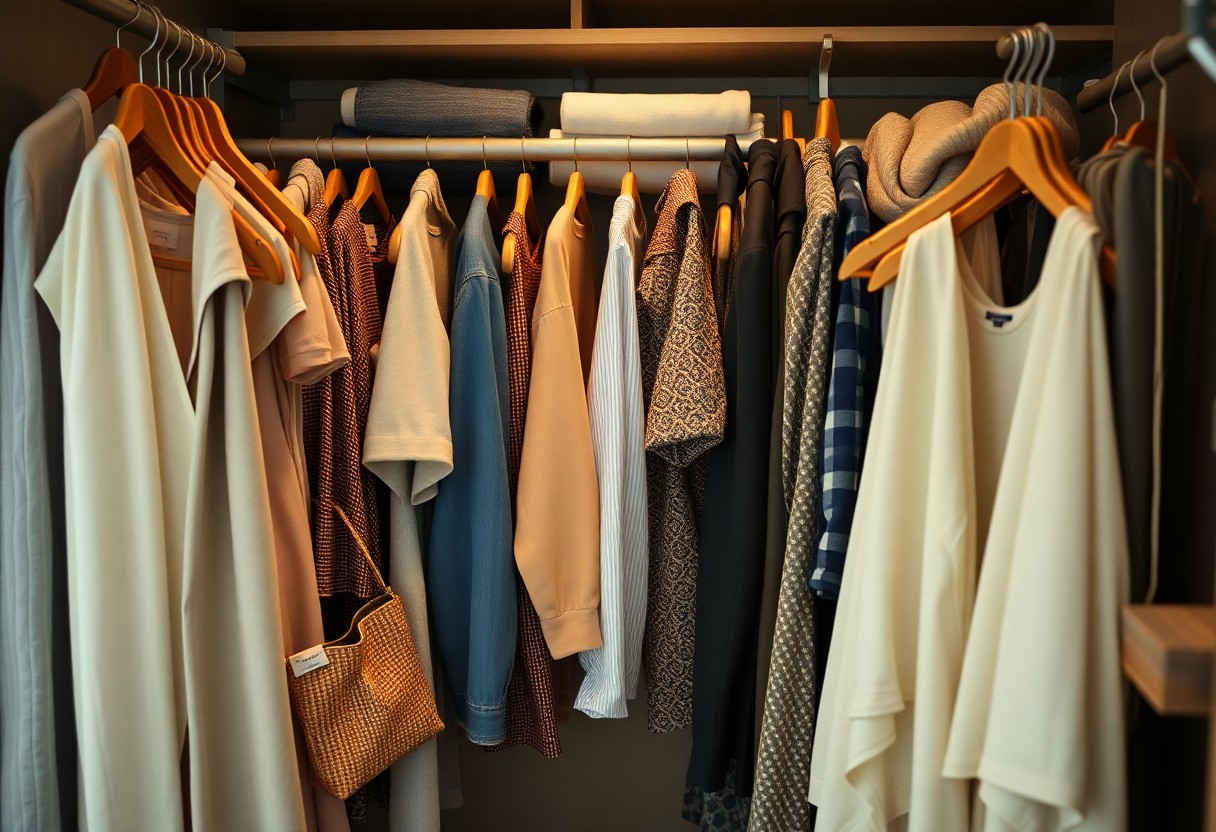
Setting the Foundation
Before launching on the journey to a sustainable wardrobe, it is necessary to establish a clear understanding of your goals and motivations. You will want to consider the values and principles that guide your fashion choices, as well as the lifestyle and personal style you wish to maintain.
Defining Sustainable Fashion
Around the concept of sustainability, you are likely to find various interpretations and definitions. You will need to acquaint yourself with the notion that sustainable fashion encompasses not only environmental considerations, but also social and economic factors that influence the production and consumption of clothing.
Assessing Your Current Wardrobe
Currently, your closet may be filled with items that no longer serve you, and it is time to take stock of what you have. You will need to examine your garments, shoes, and accessories, and consider which pieces bring you joy, fit well, and align with your newly formed values.
With a discerning eye, you will begin to notice patterns and habits that have contributed to your current wardrobe. You will see which items have been worn frequently, and which have been relegated to the back of the closet, untouched for seasons. This examination will serve as a valuable lesson, allowing you to identify areas for improvement and make informed decisions as you move forward in building your sustainable wardrobe.
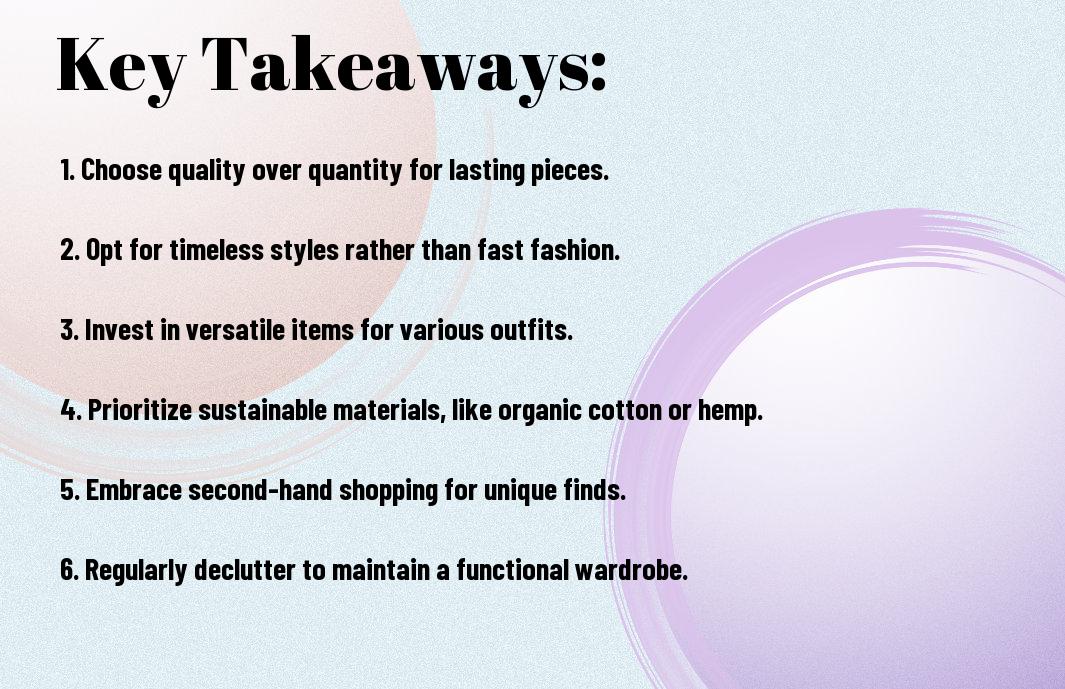
Building the Core
Assuming you have sorted through your existing wardrobe, it is now time to focus on building a solid foundation. You will want to create a core collection of pieces that can be mixed and matched to create a variety of outfits, reflecting your personal style and aesthetic.
Investing in Quality Pieces
Akin to acquiring a treasured heirloom, investing in quality pieces will serve you well in the long run. You will find that these items, though perhaps more expensive, will stand the test of time and Trends, becoming staples in your wardrobe.
Essential Items for a Sustainable Wardrobe
Across the seasons, you will find that certain items are universally flattering and versatile. You should consider incorporating these into your wardrobe, as they will provide a solid foundation for your sustainable fashion journey.
Pieces that are timeless, well-made, and complementary to your existing wardrobe will become the backbone of your sustainable wardrobe. You will find that with these vitals, you can create a multitude of outfits, from formal to casual, and that they will be worn time and time again, reducing the need for frequent purchases and waste.
Expanding Your Options
After establishing a solid foundation for your sustainable wardrobe, you can begin to explore new avenues for expansion, seeking out pieces that not only align with your values but also reflect your personal style and aesthetic, allowing you to express yourself with elegance and poise.
Exploring Different Styles and Trends
Prior to settling on a specific style, you will find that experimenting with various trends and silhouettes can be a delightful experience, enabling you to discover what truly suits your taste and flatters your figure, thereby helping you to cultivate a unique and refined sense of fashion.
Mixing and Matching for Versatility
Albeit a simple concept, combining different pieces to create multiple outfits is an art that requires some practice, but with patience and creativity, you will find that your wardrobe transforms into a treasure trove of possibilities, with each item serving as a building block for a myriad of stylish ensembles.
Your ability to mix and match pieces will depend on your willingness to think creatively and consider unexpected pairings, allowing you to extract the maximum potential from your garments and develop a wardrobe that is at once stylish, versatile, and uniquely yours, reflecting your personality and flair for fashion, as you navigate the world of sustainable style with confidence and aplomb.
Caring for Your Wardrobe
Your treasured garments deserve the utmost attention to detail, lest they suffer the slings of wear and tear.
Laundry and Maintenance Tips
For finer fabrics, consider the following:
- Gentle cycles and mild detergents
- Avoiding over-drying
After ensuring your garments are properly cleaned and stored, you will be able to enjoy them for years to come.
Repairing and Altering Damaged Items
Items that have been lovingly worn may occasionally require a stitch or two to maintain their integrity. You can learn to make these repairs yourself, or seek out a skilled tailor to do the work for you.
Damaged or ill-fitting pieces can be restored to their former glory with a bit of TLC, and you will find that the effort is well worth it, for a well-maintained wardrobe is a reflection of your personal style and attention to detail, and will serve you well for many seasons to come.
Sourcing Sustainable Materials
Despite the myriad of options available, selecting sustainable materials is a vital step in building a sustainable wardrobe. You will want to opt for materials that are gentle on the environment and align with your values.
Eco-Friendly Fabrics and Textiles
Alongside traditional materials, you may consider eco-friendly alternatives, such as organic cotton, recycled polyester, or plant-based textiles, which offer a more sustainable choice for your wardrobe.
Shopping Second-Hand and Vintage
Sourcing pre-loved items can be a delightful way to refresh your wardrobe while reducing waste. You can find unique, high-quality pieces that reflect your personal style and contribute to a more circular fashion economy.
Plus, shopping second-hand and vintage allows you to develop a deeper appreciation for the history and craftsmanship behind each garment, and you will be able to curate a truly one-of-a-kind wardrobe that showcases your refined taste and commitment to sustainability.
Staying on Track
Not only is building a sustainable wardrobe a laudable goal, but maintaining it also requires diligence and dedication. You must be mindful of your purchases and ensure they align with your values and needs, lest your efforts be for naught.
Avoiding Fast Fashion Pitfalls
The tendency to succumb to fast fashion’s allure can be overwhelming, but you must steel yourself against its siren song. Your wallet and the environment will thank you for resisting the temptation of trendy, disposable garments.
Creating a Personalized Sustainability Plan
Perils of inconsistency can undermine even the best intentions, so you must craft a plan tailored to your lifestyle and preferences. Your plan should account for your needs, budget, and personal style to ensure a harmonious and sustainable wardrobe.
Due to the unique nature of your circumstances, your personalized plan will be a reflection of your values and priorities. You will need to assess your current wardrobe, identify areas for improvement, and set realistic goals for reducing waste and increasing sustainability. By doing so, you will be well on your way to creating a wardrobe that is not only stylish but also environmentally conscious and socially responsible, allowing you to navigate the complexities of fashion with ease and integrity.
Conclusion
Following this guide, you will have acquired the knowledge to construct a sustainable wardrobe that not only pleases your eyes, but also aligns with your values. Your thoughtful approach to fashion will yield a collection of garments that stand the test of time, and you will take pride in your thoughtful, eco-friendly choices, as you effortlessly navigate the world of sustainable style with elegance and poise.
FAQ
Q: What is the first step in building a sustainable wardrobe?
A: The first step in building a sustainable wardrobe is to assess your current closet and identify the items that are in good condition, fit well, and are suitable for your lifestyle. This involves taking stock of your existing clothes, shoes, and accessories, and deciding what you want to keep, donate, or discard. By doing so, you’ll be able to see what you already have, avoid duplicating purchases, and create a solid foundation for your sustainable wardrobe. Start by taking everything out of your closet, sorting items into categories, and being honest about which pieces make you feel confident and comfortable.
Q: How can I prioritize sustainability when purchasing new clothing items?
Q: How can I care for and maintain my sustainable wardrobe to make it last longer?
A: To extend the life of your sustainable wardrobe, it’s vital to care for and maintain your clothing items properly. This includes washing clothes in cold water, avoiding fabric softeners and bleach, and line-drying or tumble-drying on low heat. You should also consider repairing or altering items instead of throwing them away. Learn basic repair techniques such as hemming, darning, or patching, and take your clothes to a tailor or cobbler if needed. Furthermore, store your clothes in a cool, dry place, away from direct sunlight, and use acid-free tissue paper or cloth bags to prevent damage and deterioration. By taking these steps, you’ll be able to enjoy your sustainable wardrobe for years to come and reduce the need for frequent purchases.
